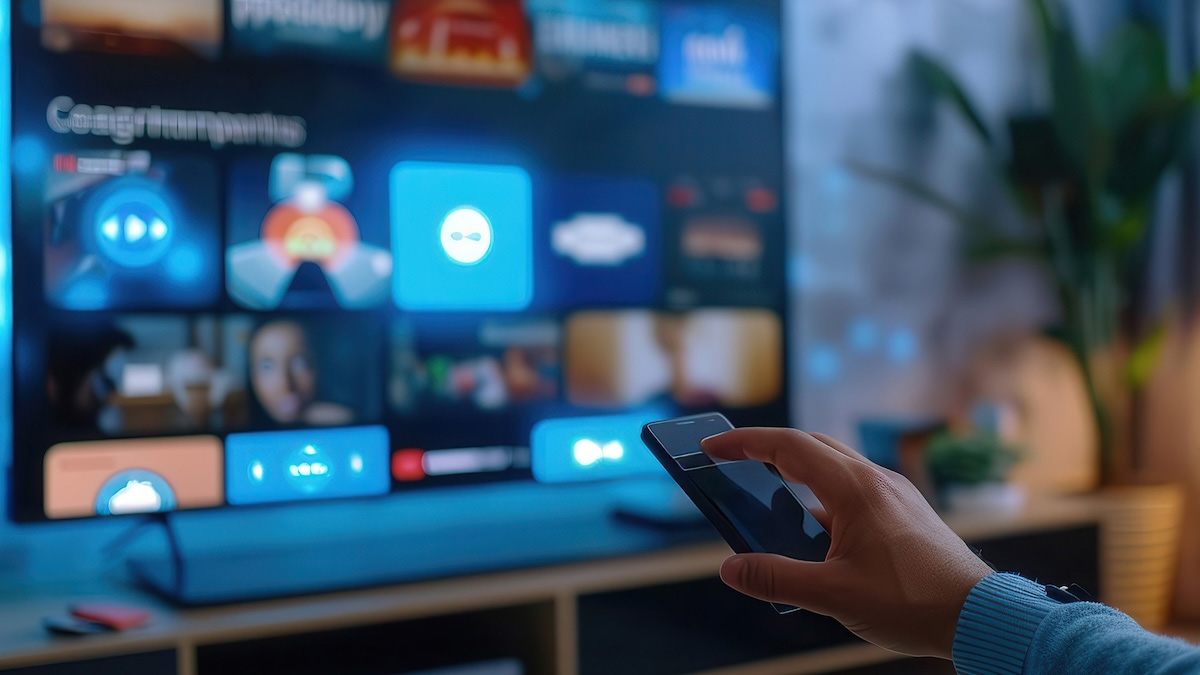Leveraging AI for faster and more effective personalization

Subscribe to NCS for the latest news, project case studies and product announcements in broadcast technology, creative design and engineering delivered to your inbox.
The video industry has had a difficult time of it over the last few years. We’ve seen continued hard churn as consumers tightened their belts, which naturally led to providers focusing on cost cutting over growth. It seems that the industry may now be turning a corner, however video service success moving forward will depend on providers pulling out all the stops to engage users and prevent churn. And as any provider worth its salt knows, this means continually improving user experience and enhancing personalization. After all, a happy, engaged user is more likely to watch for longer and stick around.
However, effective personalization is difficult to get right and can be both time-consuming and costly. Huge amounts of data need to be analyzed to determine what shows and movies the viewer will enjoy the most, and what works best to engage the user and get them to press play. AI, with its ability to quickly analyze enormous datasets and make data-driven decisions, is the ideal tool to support personalization. Consequently, it’s hardly surprising that video services, certainly the big streamers anyway, are already using AI to analyze users’ viewing habits and other relevant data, and have been for some time. Global players like Netflix have been using Machine Learning tools for years to provide relevant recommendations and even personalise thumbnails based on user preferences. AI provides the next step in advancing these types of features.
Why personalization matters
Streaming services typically have a massive catalogue of available content, which makes it difficult for viewers to find the content they want to watch quickly. And if users can’t quickly find something to watch, the likelihood is that before long, they’ll get bored with searching and promptly switch off. I’m sure we’ve all been there and done that with one service or another. When done well, personalization saves viewers lots of time and effort, and improves the overall viewing experience tremendously. Instead of endlessly searching through a huge catalogue of content to find something that appeals, viewers are offered a tailored collection of shows and movies that closely matches their unique tastes and preferences.
And of course, it’s not just content recommendations that can be personalized. The home page layout is also a key part of personalization, designed to improve the user experience by making content discovery seamless and engaging. Personalizing the layout means that each user sees an interface tailored to their preferences, behaviors, and viewing habits, enhancing both convenience and satisfaction. This can be achieved by understanding which rails a user prefers to interact with and giving them higher prominence on the home page, or featuring their favourite content in the hero.
Effective personalization increases engagement so that viewers watch for longer and keep coming back for more. It’s also a great tool to promote new and existing content and aid discovery, because it can encourage users to explore new genres that they may otherwise not consider, as well as uncover hidden treasures, and expand the scope of their viewing.
Understanding nuances around personalization
Engaging viewers and keeping them engaged is an art form and personalization is the key to success. Successful video providers collect huge amounts of data about viewers which is often used alongside the viewers preferences when they first onboarded, to curate personalized content recommendations. This includes what the viewer searched for, what videos they played and at what time of day, whether they watched to the end, how long it took them to watch, how long each viewing session lasted, as well as video ratings and popularity. Put all of this together and mix in some clever algorithms, and video services then know which movies and shows the viewer will enjoy watching the most.
Unfortunately, it’s not quite that simple because the way that viewers engage with content is incredibly nuanced. Different viewers like different things, and this goes much deeper than different genres or types of content. For example, out of an audience who all like a certain genre, let’s say, action and adventure, the same trailer may not necessarily hook in all viewers. What appeals to one consumer may not necessarily appeal to another. Video providers can attract a wider variety of viewers to a particular show if the trailer is personalized to appeal to their individual tastes. This is an area that AI is driving forward, with new software able to create custom images, videos and trailers to support the decision making process.
For example, if a viewer sees a trailer featuring their favorite actor, that will appeal to them most, while another viewer may not be interested in that actor but may prefer shows that have a strong female lead, so a different trailer may work better for them. By showing different viewers trailers that are personalized to appeal to their individual preferences, providers are much better able to encourage viewers to watch content. Similarly, thumbnails can also be personalized in much the same way as trailers can, in order to have the most impact. This process involves choosing the single frame from a show or movie that is most likely to resonate with the individual viewer and using it as the thumbnail. By selecting the frame that best captures their interest, the platform increases the chances that viewers will click on the title and start watching.
Impact of AI on personalization
Before the advent of AI, video services relied heavily on static user profiles, limited metadata, and manual tagging of content for personalization. With AI, the process is faster and more accurate, which makes it both more efficient and effective. Using AI and ML, providers can identify nuanced patterns in user behavior, which enable dynamic and adaptive personalization that evolves with the user’s preferences in real time.
AI vastly speeds up the processes that enable personalization. Let’s consider tagging as an example. For content recommendations to be accurate, video providers need to understand and know the content of shows and movies down to the minutia detail. In the past, this would have involved teams of staff, some in-house and some freelance, sitting down and watching every show in detail then accurately tagging it.
Yet these days, with AI, the entire keyword tagging process can be automated. And additionally, it can also add a great deal of detail which would not have been practical when the process was done manually. Detailed keyword tagging helps video services to better identify similarities between content so that recommendations can be more diverse but still be accurate and appeal to viewers. In this use case, it’s easy to see that AI not only saves time and effort, but also makes the process more effective.
Beyond personalization, AI plays a crucial role in enhancing the user experience by optimizing streaming quality. Take Netflix, for instance, which leverages machine learning algorithms to monitor network conditions in real time and dynamically adjusts video quality. By assessing factors such as bandwidth, device type, and geographic location, Netflix ensures the best possible video resolution while reducing buffering and interruptions. This seamless performance not only keeps users engaged but also encourages them to stay on the platform because loading times are fast and playback is smooth.
What will personalization mean in tomorrow’s world?
Effective personalization is fundamental to a video provider’s success. Without it, the viewer won’t be able to easily find content they want to watch, and additionally the content that they may enjoy may not appeal to them at first glance. AI is enabling video services to deliver faster and more precise recommendations with an improved user experience. Already AI can help providers to infer mood and deliver emotionally and situationally appropriate recommendations. The question is, how might this develop and improve as time goes on and AI technology continues to advance?
It will most likely become even more precise and intuitive as AI systems are used to analyze subtle behavioral cues like voice tone and biometrics to understand the user’s mood and anticipate their preferences. I expect the content creation functionality of AI will continue to advance, even being able to create unique content experiences, such as different opening scenes or alternate endings, designed to provide each viewer with the experience that they will enjoy the most. I have a feeling that we are only at the beginning of what AI-driven personalization can deliver — it’s going to be an exciting ride for sure.
Subscribe to NCS for the latest news, project case studies and product announcements in broadcast technology, creative design and engineering delivered to your inbox.





tags
Accedo, AI, Artificial Intelligence, Broadcast Monetization, Content Distribution, Personalization
categories
Broadcast Automation, Featured, Streaming, Thought Leadership, Voices